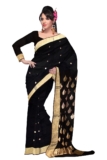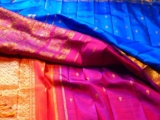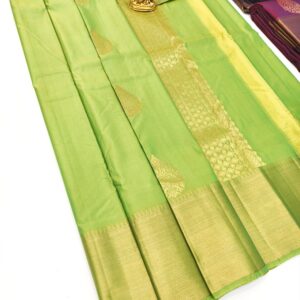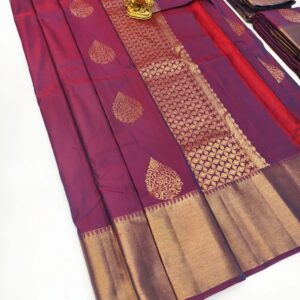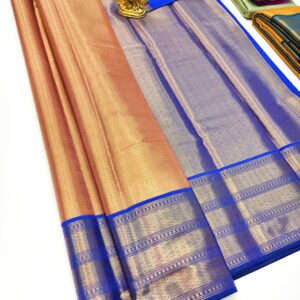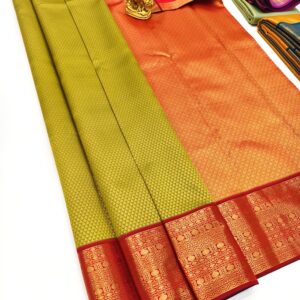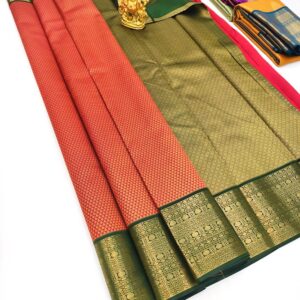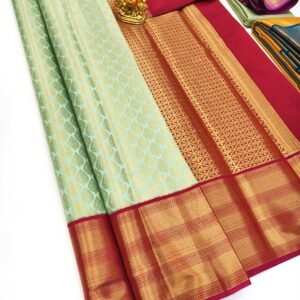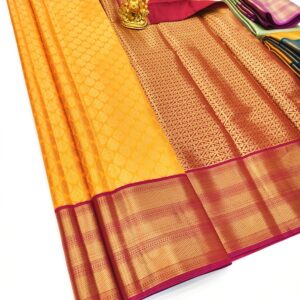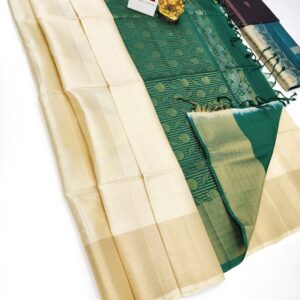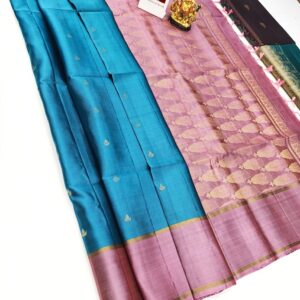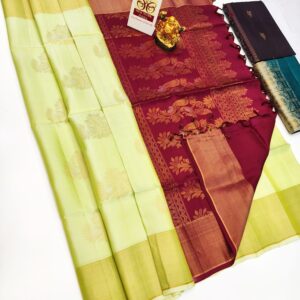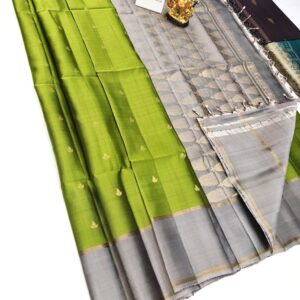The saree a timeless piece of clothing that embodies grace, elegance, and cultural heritage has adorned Indian women for centuries. But did you know that the ...
Silk sarees have always held a timeless charm in Indian fashion. Elegant, regal, and rich in tradition, they are more than just garments, they are cultural ...
A wedding in South India is incomplete without the luxurious swish of silk. And when it comes to bridal silk sarees, nothing rivals the timeless grandeur of a ...
A black silk saree is a timeless piece in any Indian wardrobe. Elegant, bold, and commanding, it exudes confidence and class. Whether it’s a plain black ...
Silk sarees are much more than just exquisite garments; they are a canvas of cultural stories, traditions, and artistry. Worn across India for centuries, ...
When it comes to traditional Indian attire, especially sarees, silk is often considered the epitome of grace, luxury, and elegance. However, in today’s ...
Sarees have always been synonymous with elegance, grace, and timeless fashion. But in the ever-evolving world of Indian ethnic wear, trends constantly ...
A black saree is more than just a wardrobe staple—it’s a timeless expression of elegance, mystery, and sophistication. From red carpet glamour to festive ...
India’s sartorial story is as vibrant and diverse as its culture. With centuries of tradition woven into its threads, Indian attire has gracefully evolved ...
Sarees have long been a symbol of grace and cultural richness in Indian fashion. While the classic six-yard drape remains timeless, the fashion world ...
India’s rich textile heritage has gifted the world with many timeless fabrics, but few are as iconic and opulent as the Kanchipuram saree. Known for its ...
The saree is an eternal symbol of grace, culture, and femininity in South Asia, celebrated for its elegance and versatility. Yet, for many, draping a ...
- « Previous Page
- 1
- 2
- 3
- 4
- 5
- …
- 12
- Next Page »
User Deals: Ram Kumar
New Design K.M.D Soft 75% Pure Silk Saree Pista Green Color w/ Blouse
 +91 9080459941
Whats App for Latest Sarees & Designs
+91 9080459941
Whats App for Latest Sarees & DesignsUnique Design K.M.D Soft 75% Pure Silk Saree Purple Color w/ Blouse
 +91 9080459941
Whats App for Latest Sarees & Designs
+91 9080459941
Whats App for Latest Sarees & DesignsNew Trendy Design Kanchi Semi Silk Saree Honey Color w/ Blouse
 +91 9080459941
Whats App for Latest Sarees & Designs
+91 9080459941
Whats App for Latest Sarees & DesignsBeautiful Design Kanchi Semi Silk Saree Mustard Yellow Color w/ Blouse
 +91 9080459941
Whats App for Latest Sarees & Designs
+91 9080459941
Whats App for Latest Sarees & DesignsKanchi Semi Silk Saree Red Color w/ Blouse
 +91 9080459941
Whats App for Latest Sarees & Designs
+91 9080459941
Whats App for Latest Sarees & DesignsTrendy Design Kanchi Semi Silk Saree Pista Green Color w/ Blouse
 +91 9080459941
Whats App for Latest Sarees & Designs
+91 9080459941
Whats App for Latest Sarees & DesignsUnique Design Kanchi Semi Silk Saree Yellow Color w/ Blouse
 +91 9080459941
Whats App for Latest Sarees & Designs
+91 9080459941
Whats App for Latest Sarees & DesignsBeautiful Design Pure Soft Silk Saree Copper Color w/ Blouse
 +91 9080459941
Whats App for Latest Sarees & Designs
+91 9080459941
Whats App for Latest Sarees & DesignsUnique Design Pure Soft Silk Saree Blue and Purple Border Color w/ Blouse
 +91 9080459941
Whats App for Latest Sarees & Designs
+91 9080459941
Whats App for Latest Sarees & DesignsPure Soft Silk Saree Lemon Yellow Color w/ Blouse
 +91 9080459941
Whats App for Latest Sarees & Designs
+91 9080459941
Whats App for Latest Sarees & DesignsTree Design Pure Soft Silk Saree Bottle Green Color w/ Blouse
 +91 9080459941
Whats App for Latest Sarees & Designs
+91 9080459941
Whats App for Latest Sarees & DesignsLatest Design Pure Soft Silk Saree Green and Gray Border Color w/ Blouse
 +91 9080459941
Whats App for Latest Sarees & Designs
+91 9080459941
Whats App for Latest Sarees & DesignsAt kanchisilksarees.com you can buy original Kanchipuram Silk Sarees or you can visit our shop near Gandhi Road, Kanchipuram.
Get latest and trending kanchi silk sarees designs in your inbox.







